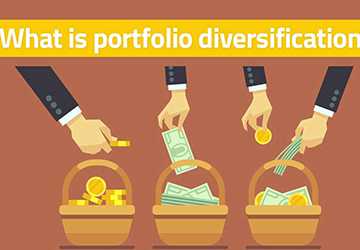An archer aims intently at a target, believing he can shoot gold. Now imagine waves of intrusion targets moving unpredictably in random directions.
As the scenario changes, so must the strategy; this highlights the difference between concentrated investment and wealth creation focused on diversification to prepare for an unstable future.

Although luck sometimes favours a bold single arrow, sustainable survival requires managing the diversity of probabilities by allocating resources across different launch pads to achieve successful diversification.
In this article, we'll explore five reasons asset concentration is a disaster compared to careful diversification, which can lead to sustained investing success over the longer term.
Let's start!
Like pillars that structurally ensure outstanding achievement and defy gravity with a stable foundation, portfolios rely on fundamental principles while the market constantly moves around a retained core.
Diversification plays this role in investing by providing a sturdy anchor to weather the coming storms, just as a robust framework ensures that iconic landmarks will last for centuries.
Let's examine five reasons why position diversification will hinder wealth creation during the transition between euphoria and fear.
Understand that diversification is the most stable pillar of long-term support for personal wealth, regardless of temporary turmoil. Let's strengthen the foundation of your portfolio now!
Every investor is inevitably faced with bad bets that can cause a portfolio to collapse without adequate defences to spread the damage.
Diversification provides a shield that allows individual stocks to remain cratered by localized quarantine events rather than leading to associated catastrophic chain reactions that wipe out entire savings.
We diversify our holdings across companies, industries, countries and asset types to reduce isolated events that could lead to devastating portfolio collapses.
Independence builds resilience and ensures dynamism continues despite localized economic downturns—a balancing buffer. With risk spread across all dimensions, the portfolio can withstand occasional storms without ruining the journey ahead.
In addition to protecting against asset declines, diversification brings previously inaccessible opportunities to emerging overseas markets and provides differentiated return drivers.
Developed international regions continue to grow, while frontier countries and exotic alternative assets create more return streams conducive to long-term compounding. Globalization of upward mining can be achieved through extensive investment.
Expanding your horizons beyond your domestic residence increases your chances of discovering promising niches that focus yet on being noticed or overlooked. Maximum diversification unlocks the world's full growth potential.
When limited holdings occupy a portfolio, any hint of risk can rock a boat that lacks stable ballast if something goes wrong in a particular industry.
However, different asset allocations manage turmoil by working in opposite directions. While some securities face headwinds, others take advantage of tailwinds, providing buoyancy that balances the overall direction of the fleet.

Diversity inherently reduces portfolio volatility by mitigating rather than amplifying individual cyclical fluctuations among related categories.
Because risks are spread out, occasional recessions are more likely to be temporary setbacks than permanent disasters.
While maximizing risk-adjusted returns motivates immediate trading decisions, realized portfolio performance is assessed against sustainable compounding to ensure lifestyle improvements over the longer term.
Diversification has always shown its benefits in the long run, giving room for unstable growth engines to run at full speed while minimizing long-term setbacks.
Combining stable and high-growth investment types to create a portfolio with twin engines, reliable fundamental compounders and high-performing opportunists that drive assets to develop at optimally calibrated, risk-adjusted speeds season after season, closer to investors' goals.
Portfolios benefit from built-in flexibility as the only constant in the stock market is constantly changing. They flexibly adjust their exposure to changing macroeconomic conditions rather than relying on rigid rigidity that is doomed to fail as long-term trends change. Diversification makes transformation easy.
The economic acceleration is prompting an increased focus on cyclical stocks, while indicators point to a recession and are leading to a shift from vulnerability to defensive hedging.
Diversified stocks keep options open, avoid dangerous overinvestment, and make it easier to navigate unpredictable circumstances.
While guarantees for predicting future market movements remain elusive, proper preparation can best protect a portfolio from known risks. It seizes opportunities through thoughtful diversification rather than unconditionally pooling capital and praying for perfection.
Evaluate current investment positioning across categories and examine promising additions to fill gaps.
Think of diversification as a "free lunch" because it allows you to expand exposure to different return drivers without charging higher costs. It's time to start handing out the next egg!